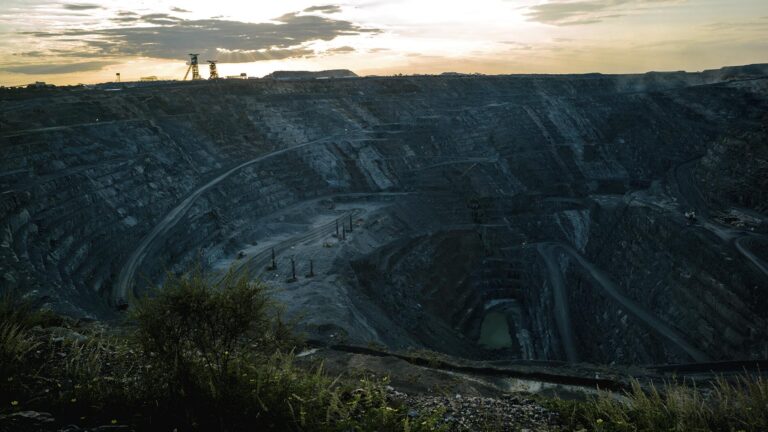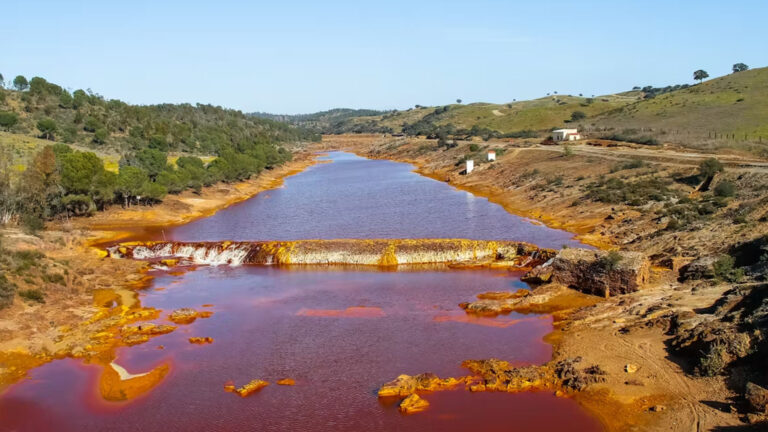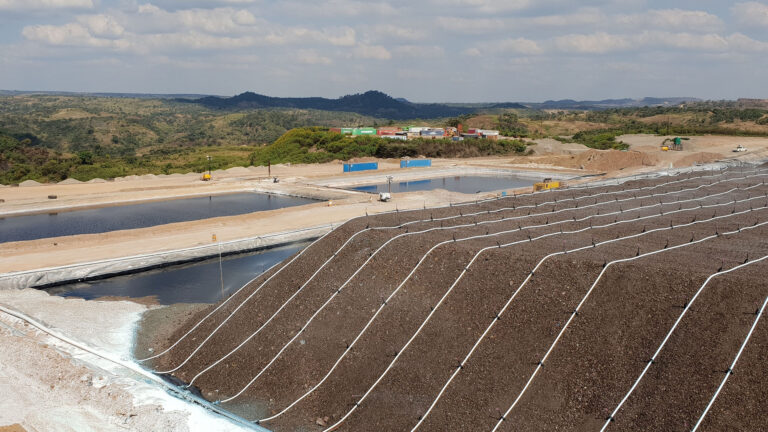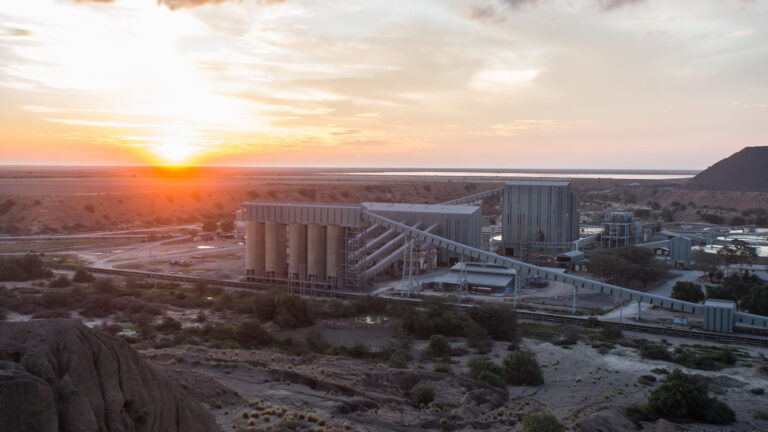The mining industry is the backbone of modern civilization. From the smartphones in our hands to the buildings we live and work in, mining provides the raw materials that power our daily lives. But what exactly is the mining industry, and why is it so vital to economies across the globe?
In this article, we examine the foundations of the mining sector, its operations, key resources, economic significance, and the evolving challenges it faces.
What is the Mining Industry?
The mining industry refers to the collection of activities and processes involved in the exploration, extraction, processing, and management of naturally occurring solid minerals from the Earth’s crust. These minerals include resources such as coal, diamonds, metallic ores, and petroleum derivatives.
The industry transforms these raw materials into economically valuable products essential for infrastructure, energy generation, technological advancement, and industrial manufacturing.
It plays a crucial role in the global economy, supporting numerous downstream sectors including energy production, construction, and chemical manufacturing.
Mining can be classified into several sub-sectors, including:
- Metal Mining (e.g., gold, copper, iron, lithium)
- Coal Mining
- Industrial Mineral Mining (e.g., gypsum, phosphate, salt)
- Quarrying (e.g., gravel, sand, limestone)
- Oil and Gas Extraction (often included in the broader extractive industries)
Types of Mining Operations
Mining operations vary based on the depth, location, and nature of the resource being extracted. The main types include:
- Surface Mining: Involves removing soil and rock to access minerals near the earth’s surface. Examples include open-pit mining and strip mining.
- Underground Mining: Used when minerals are located deep beneath the surface. It includes shaft mining and drift mining.
- Placer Mining: Involves extracting minerals from alluvial deposits, commonly used for gold.
- In-situ Mining: Minerals are dissolved using a solution and then pumped to the surface.
Each method requires different equipment, environmental considerations, and safety protocols.
Here is one of the best books I have had the pleasure of reading. If you have an interest in learning more in detail about the mining methods, check out Introductory Mining Engineering by Howard L. Hartman and Jan M. Mutmansky.
Key Resources Extracted by the Mining Industry
Mining yields a broad spectrum of resources, categorized as:
- Metallic Minerals: Gold, silver, copper, zinc, iron, nickel, lithium, and rare earth elements.
- Non-metallic Minerals: Phosphate, potash, clay, salt, gypsum.
- Energy Resources: Coal, uranium, oil sands.
- Construction Materials: Gravel, sand, stone, cement raw materials.
These materials are integral to infrastructure development, electronics, agriculture, renewable energy technologies, and more.
Economic Significance of Mining
The mining industry is a significant economic driver for many countries.
Its contributions include:
- Direct employment in mines and indirect employment in related sectors (logistics, machinery, etc.)
- This is especially important for resource-rich countries like Australia, South Africa, Chile, and Botswana.
- Mining often brings roads, electricity, and water to remote areas.
- Attracts multinational companies and drives local economic activity.
In some developing nations, mining accounts for a significant portion of the GDP and is crucial for national development.
A notable example is Botswana, which transformed from one of the poorest countries in Africa into a middle-income nation primarily due to the successful development of its diamond mining sector.
The industry’s revenue has fueled national infrastructure, health, and education programs, showcasing mining’s potential to drive long-term economic prosperity.
Social and Environmental Considerations
While mining fuels development and supports economic growth, it also presents significant environmental and social challenges that must be carefully managed. The impacts vary depending on the type of resource, location, and method of extraction, but often include:
- Land Degradation and Deforestation: Mining often necessitates clearing vast tracts of land, resulting in habitat loss, soil erosion, and biodiversity decline. In tropical regions, deforestation linked to mining operations has caused irreversible damage to ecosystems.
- Water Pollution and Consumption: Toxic chemicals, such as cyanide and mercury, used in mineral processing, can contaminate water bodies. In arid regions, mining’s high water usage strains local water supplies and threatens the livelihoods of farmers.
- Air Emissions: Mining releases dust and greenhouse gases into the atmosphere, contributing to respiratory diseases in nearby communities and exacerbating climate change.
- Community Displacement: Large-scale mining projects may force local populations to relocate, often without adequate compensation or support, resulting in social instability and the loss of cultural heritage.
- Worker Safety and Rights: Mining is a high-risk occupation. Accidents, exposure to harmful substances, and labor exploitation remain challenges, particularly in informal or illegal mining operations.
Modern mining companies are increasingly adopting sustainable practices to reduce these impacts. These include:
- Environmental Rehabilitation: Restoring land after mining, replanting native vegetation, and developing post-mining land uses like agriculture or ecotourism.
- Stakeholder Engagement: Involving local communities in decision-making, benefit-sharing, and grievance mechanisms to build trust and foster long-term partnerships.
- Regulatory Compliance and Voluntary Standards: Adhering to national environmental laws and international frameworks like the Initiative for Responsible Mining Assurance (IRMA) or the Equator Principles.
By integrating sustainability into their core operations, responsible mining companies aim to ensure that the benefits of mining are shared equitably while minimizing harm to people and the planet.
The Future of the Mining Industry
As the world transitions to greener technologies and digital infrastructure, the demand for critical minerals is skyrocketing. Lithium, cobalt, and rare earth elements are essential for batteries, electric vehicles, and renewable energy systems. This shift is not only reshaping global supply chains but also compelling countries to reassess their resource dependencies and explore new mineral reserves.
The environmental and geopolitical implications of this mineral rush are considerable. Nations are investing in critical mineral strategies to secure supply chains. At the same time, mining companies face increasing pressure to ensure that extraction processes are not only efficient but also ethical and sustainable.
Technology is also transforming mining operations in ways that reduce costs, improve safety, and minimize environmental impacts:
- Automation and AI: Robotic drilling, autonomous haul trucks, and AI-powered monitoring systems are making mining more efficient and reducing the need for human labor in hazardous environments.
- Remote Sensing and Drones: These tools enable precise geological surveys and real-time monitoring of mining sites, facilitating better resource estimation and early detection of environmental risks.
- Data Analytics: Advanced analytics enhance decision-making in exploration, extraction, logistics, and maintenance, resulting in increased productivity and reduced downtime.
- Sustainable Practices and Circular Economy Principles: The industry is exploring new methods for resource recycling, mine rehabilitation, and waste reduction to promote long-term environmental sustainability.
The transformation is also cultural and regulatory in nature. Governments, industries, and consumers are pushing for greater transparency, ethical sourcing, and environmental stewardship in mining operations.
ESG (Environmental, Social, and Governance) frameworks are being integrated into corporate strategies, and digital traceability solutions are being used to track minerals from mine to market.
This paradigm shift aims to ensure that the mining industry’s growth does not come at the expense of people or the planet.
Conclusion
The mining industry is more than just extracting resources from the ground. It’s a complex and dynamic sector that underpins the global economy, supporting innovation and development across every continent.
Understanding how mining works, its importance, and its future trajectory is crucial for anyone interested in economics, sustainability, or industrial progress.






